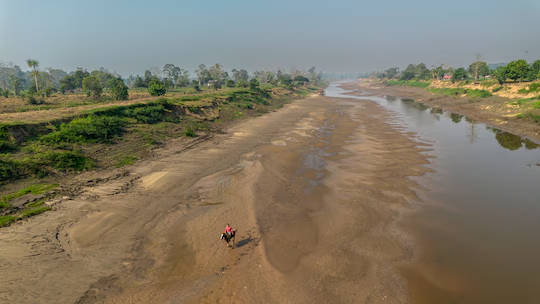 Washington Post, Sept 13, 2024
Washington Post, Sept 13, 2024
Men ride horses Sunday across the dried-up Parana do Manaquiri, a river in Manaquiri, in Brazil’s Amazonas state.
Brazil is in the grip of its worst drought on record, Brazil’s Center for Natural Disaster Monitoring and Alerts said this month, a drought that has parched at least 59 percent of Latin America’s largest country and dried out more than 1,400 cities.
Along the Rio Madeira in Amazonas state, locals are trekking miles on the hot sands of the dried riverbed in search of water. In the Pantanal, the world’s largest tropical wetland, fires have scorched an estimated 20,000 square kilometers (7,720 square miles). The vast Cerrado region is in the grip of the worst drought in at least 700 years, according to researchers at the University of São Paulo. And the air in São Paulo state has grown so heavy with forest fire smoke that authorities have urged people to avoid physical activity outside.
Much of the crisis, scientists say, can be explained by climate change, which is driving temperatures higher and making rainfall more unpredictable. But it’s been exacerbated by the deforestation of the Amazon, which has the potential to disrupt rainfall patterns across much of South America.
The biome is hydrated by a unique rainfall pattern known as “flying rivers.” Moisture blows in from the Atlantic Ocean and forms rain over the eastern Amazon. The dense forest canopy absorbs the water, then releases much of it back into the atmosphere as vapor to be carried farther west. The cycle repeats until the flying rivers collide with the Andes mountains, where they turn southward into central Brazil, Paraguay, Uruguay and Argentina.
Reliant on trees, the hydraulic system is now being frayed by deforestation. The destruction has been most acute in the southeastern Amazon, precisely where the moisture from the Atlantic is first deposited. The loss of vegetation is reducing the volume of water that’s reaching the continent.
This effect is being compounded by deforestation elsewhere. The Cerrado region, which has far fewer environmental protections than the Amazon, has been decimated in recent years by forest loss. Eight of the 10 municipalities that posted the highest rates of deforestation last year were concentrated in the region.
